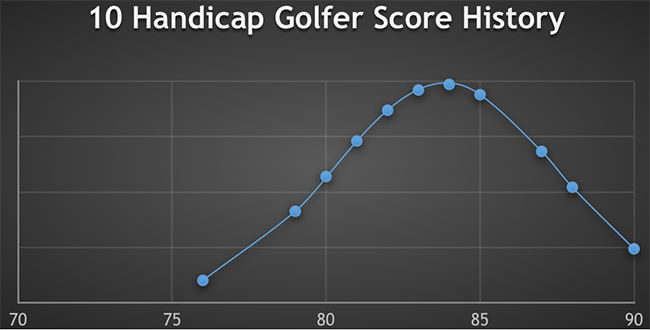No golfer is pleased when they play poorly, especially if they shoot is much higher than what their handicap card says. The problem with this logic is the root of a common-held myth amongst golfers that you should be scoring to your handicap.
That simply is not the case.
GolfWRX.com contributor and PGA Professional Dean Kandle explains the myth behind your average score and your handicap, which is leading to bloated expectations and less fun on the course.
You Are Not Your Handicap
I can’t tell you how many times I’ve heard players say, “I didn’t play to my handicap,” therefore insinuating they had a bad round. What does “playing to your handicap” actually mean, though? Well, if your course handicap is 10, then it means shooting 10 strokes over the course rating.
Take a course that’s a par-70 and has a course rating of 71.0. Playing to your handicap means shooting 81. Pretty simple. Now, keep in mind that the USGA handicap system uses the 10 best scores out of your last 20 to determine your current handicap. Therefore, the scores used to make up your handicap are a picture of your best golf. It does not take into account the times you had one of those days.
Imagine being a salesman and being evaluated on your best six months in the last year. That might be nice, right? But is it a picture of who you truly are as a salesman?

You Are Your Average
With an in-depth look at your score history, you can gain a clearer picture of where your game truly stands. In the real-life example below, I plotted a 10-handicapper’s scores on a course with a rating of 71.0. He had a range of scores from 76 to 90 and an average of 83.85.
This player’s score history is very typical of the majority of regular golfers out there. Most will have a spread of 12-15 strokes (better players usually have an even wider spread) and have roughly two-thirds of their scores within 3-5 shots of the average.
Notice that this player has only played to his handicap five times! He has, however, scored average or better nine times out of the last 20 rounds and a fraction above average (84) three additional times. If his expectation is to play to his handicap or better every time out, he’s going to leave the golf course disappointed 75 percent of the time. With a better understanding of his average score, he’s more likely to accept an 83 or an 85 as it’s a more realistic expectancy of his game at this point in time.
Understanding the level of golfer you are, what you should be aiming for and how you should feel after a typical round of golf will not only improve your mood on the golf course, it may just make you a better player.
———
Be sure to follow us on Twitter @SwingbySwing and Like Us on Facebook.




